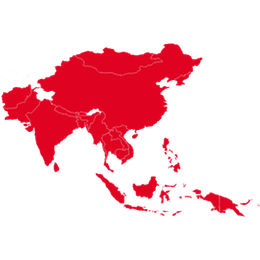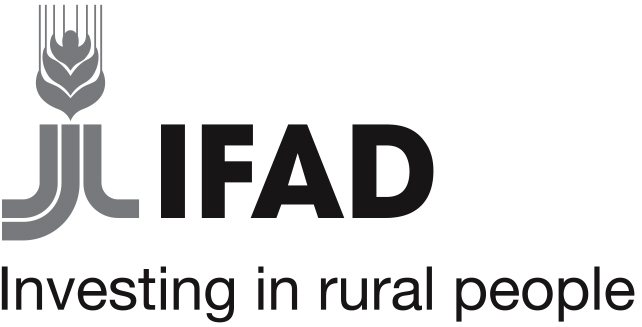Settlement and titling of new land in Bangladesh
"Land was titled in the names of both husband and wife in many cases."
BACKGROUND
In the river and estuary areas of Bangladesh, sand bars formed by erosion and accretion can create new ‘char’ land. Settlement and titling of these chars in the names of landless poor people can provide a secure home and potential agricultural income stream.
WHAT’S INVOLVED
Access to land
The project identified suitable char land and matched it to suitable beneficiaries who could benefit from its potential, then supported them through the titling process.
Poverty alleviation
After securing access to a productive asset, previously landless people were able to develop their chars into a means of income.
Empowering women
The titling and settlement project had a significant positive impact on female settlers. Land was titled in the names of both husband and wife in many cases, improving their security.
EXPLORE THIS SOLUTION
The char settlement project can offer
- Experience dealing with the process of titling and settling land within a complex bureaucracy
- Experience of helping marginalized people and those without literacy skills to manage a legal process, and the challenges this entails
Show Full Solution
Summary
A feature of the geography of Bangladesh is char land – new landmass created by the process of erosion and accretion when sandbars form in the beds of rivers and the estuaries. Char lands can either be islands or attached to existing land. Developing these lands is one way of providing landless people, or those who have lost their land, with access to a productive asset.
The overall objective of the land titling project is to reduce poverty and hunger for poor people living on newly accreted chars by providing them with improved and more secured livelihoods. Land titling is an important step in the process of establishing a secure social and economic base for the inhabitants of chars.
Challenge
Poverty is widespread in Bangladesh. Landless people can achieve a livelihood and security using newly-formed char land, but this requires an effective land settlement and titling process.
Solution
The project’s main task was to provide settlers with an assured access to and ownership of land, along with various other activities to improve livelihood and infrastructure. It aimed to secure land titles granted to 20,000 households.
The project’s process was:
(a) surveys to assess availability of land and a plot-to-plot survey to identify the current occupiers current and ownership status
(b) selection of target group households
(c) process of land titling
(d) modernization of the computerized Land Records Management System (LRMS)
This is followed by a six-step process for registration of title, which is carried out by the land staff of the local administration. Successful innovations include public hearings to confirm the landless households, registering the title in the name of both wife and husband to provide very poor and landless households with secure land titles, and an electronic land record management system. The computerisation of records helps to make records less vulnerable to improper alteration and increase public accessibility. Ownership of newly accreted land is officially vested in the government.
Results
All settlers have successfully obtained land titles under the project and improved their agricultural production and income. Monitoring results show that the vast majority of settlers have retained ownership to their land, confirming that land titling has resulted in sustainable benefits.
Various impact surveys were conducted during implementation (e.g. extent to which the project has reached its target group of resource-poor households) but these did not assess the impact of obtaining land titles on changes in farmers’ agricultural practices, productivity and returns from their agriculture, fisheries and livestock systems and on their livelihood in general.
Land settlement and titling has also proven to be remarkable in its transformative process and results towards women’s empowerment. During this project, women have become more self-confident and empowered through land titling and integrated interventions including access to credit and enhanced technical skills.
Lessons learned and potential for replication
The process followed by the project, including land settlement and titling is suitable for replication in other projects in Bangladesh but would not be widely applicable elsewhere. Key lessons include:
-
Beneficiaries are paying significant amounts (some have paid up to BDT 50,000 for so-called “mediation services”), throughout the settlement process to various authorities and intermediates. More clarity should be given to beneficiaries on where their payments end up and the transparency of the processes related to the mediation services should increase.
-
Settlement activities follow a hearing process, land deed registration (Kabuliyat) and the land title (Khatian) distribution. Completing the settlement scheme and marking the end of the relationship between the project and the beneficiaries, it is crucial that relevant information be disclosed for an appropriate understanding of the value and duty related to the land title. (Some 22 terms and conditions restrict the title rights provided.)
-
Enhancement of critical procedures is necessary to speed up the settlement and titling process to adequately reach the marginalized and most vulnerable.
-
High turnover rates of key staff in the Project Directorate and Land Offices are affecting the efficiency of land settlement activities.
-
Current processes for settling land disputes are affecting the most vulnerable and marginalized (especially those who are illiterate).
Next steps
Assess whether the LRMS software can be used as a sustainable tool for land records, and whether it is possible or helpful to digitalize the project’s maps and relate them to a GPS.
Solution Video
Last update: 29/03/2019


